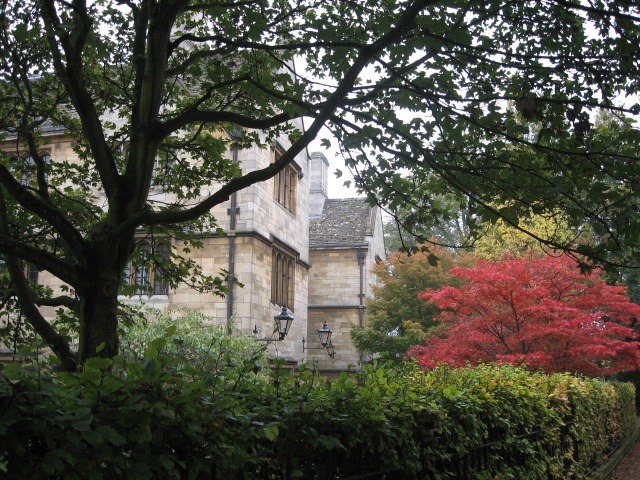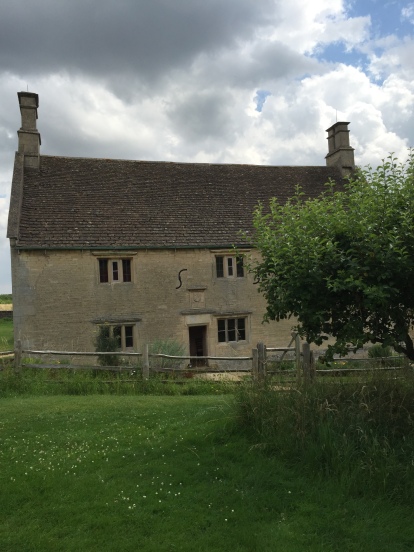
Merton College Oxford, where Tolkien was Professor of Anglo Saxon Studies
It is often the case that practitioners of humble art forms have more freedom of expression than those working at the smarter end of the market. Until the fifteenth and sixteenth century, pictorial art was confined to religious themes, and physically restricted to church buildings. The widening of art’s scope took place not in the painting of timeless masterpieces, but in the decoration of tapestries, storage boxes, furniture, crockery and cutlery. At the National Gallery, fifteenth century storage boxes decorated by Botticelli and Piero di Cosimo are just as important as famous paintings. It was the lack of expectation surrounding a storage box that allowed Botticelli to try different things in safety.
A similar thing often happens with writing. Take the work of J.R.R. Tolkien, for example. A devout Roman Catholic after converting at a young age, Tolkien’s religion did not naturally admit to change, questioning and ambiguity, but in the safe place of seemingly unimportant children’s stories, Tolkien found a new freedom to explore.
Tolkien’s The Lord of the Rings opens in The Shire, an imagined rural community of hobbits, small, furry-footed folk who like eating, drinking, smoking pipe weed, and pursuing an unvarying farming existence. The Shire, however, is not simply an idealisation of an older and better world. There is much small mindedness in hobbit society. Maps of the Shire show mostly white space beyond its borders. And even within the Shire, hobbits from one area will judge hobbits a few miles down the road as strange folk. It is not surprising that some hobbits feel restless in this stultifying little community. There’s old Bilbo Baggins for example, the hero of Tolkien’s first book The Hobbit, who went on a long journey and never really settled down afterwards.
By the time The Lord of the Rings begins, Bilbo is one hundred and eleven years old. Bilbo owns a mysterious magic ring which he picked up on his travels. This ring, as it turns out, has various dark powers, one of which is to keep its owner from ageing. Bilbo is one hundred and eleven but looks much younger. While this might seem like a good thing, the endless youth provided by the ring actually presents itself as a failure to move on. Bilbo makes an important personal step when he manages to heed the advice of his wizard friend Gandalf, and hand the ring to his adopted heir, Frodo Baggins.
Ironically, the ring that kept Bilbo’s life in limbo immediatly creates a revolution in Frodo’s life. Gandalf explains to him that the ring is sought by evil forces, hoping to use its powers to enslave Middle Earth. Frodo and a few friends set off on a journey designed to keep the ring out of enemy hands. On this journey, change remains an overriding theme. One of the most telling moments comes in an argument between the good wizard Gandalf, and Saruman the White. Saruman, the wisest of wizards, has turned to the dark side. The furious row between the wizards is virtually the conflict between the outlooks of religion and science. Gandalf objects to the fact that Saruman’s once pure white cloak is now multi-coloured. With scientific sophistication, Saruman replies that white can be many things:
“White cloth may be dyed. The white page can be over written, and the white light can be broken.”
The image of breaking white light is clearly inspired by science. Isaac Newton had shown in the eighteenth century that white light is actually made up of coloured light. Passing white light through a prism has the effect of breaking white light into its constituent colours. Gandalf objects that “he that breaks a thing to find out what it is leaves the path of wisdom.” This is the philosophy of a man who instinctively shies away from the modern scientific world.

Woolsthorpe Manor, Lincolnshire, where Issac Newton studied light, confirming that white light consists of a spectrum of colour.
We should remember that Gandalf is called the Grey, with connotations of boredom, colourlessness, and the difficulty of defining clear categories. Steady old Gandalf does not simply represent good any more than treacherous Saruman simply represents evil. The idea of change in The Lord of the Rings is complex, there are many grey areas, which were lacking in Tolkien’s everyday life bound by rigid belief. Tolkien claimed that his stories had nothing to do with commenting on real issues. He tried to keep them a safe place. The reality is, Tolkien shone the white light of his life through the prism of his books, and it emerged as many colours. Maybe that’s what always happens in great writing.

Thanks for your thoughtful post and a very original reflection. It’s always wonderful to learn a new perspective on Tolkien!
LikeLike
Hello, Earthoak. Thanks so much for your comment. What a nice surprise!
LikeLiked by 1 person